Thank you to the Alberta Ecotrust Foundation for supporting our Forestry work.
How does forestry work within Alberta’s forests?
A paradigm shift is required in the forestry industry.
The legislated goal for commercial forestry should be ecologically sustainable forests, with timber being one of, and not the primary, goal of forest management. Forests need to be managed as healthy ecosystems that promote, among other things, biodiversity, ecological integrity, maintenance of values of importance to the public and Indigenous communities, and economic opportunities. A thriving forestry industry can exist without compromising environmental and social values.
Alberta needs updated Forestry legislation that reflects both contemporary scientific knowledge and traditional Indigenous knowledge on sustainable forest management. With few meaningful updates or amendments since its creation in the early 1970s, Alberta’s Forests Act still reflects the values and objectives that prevailed in that era.
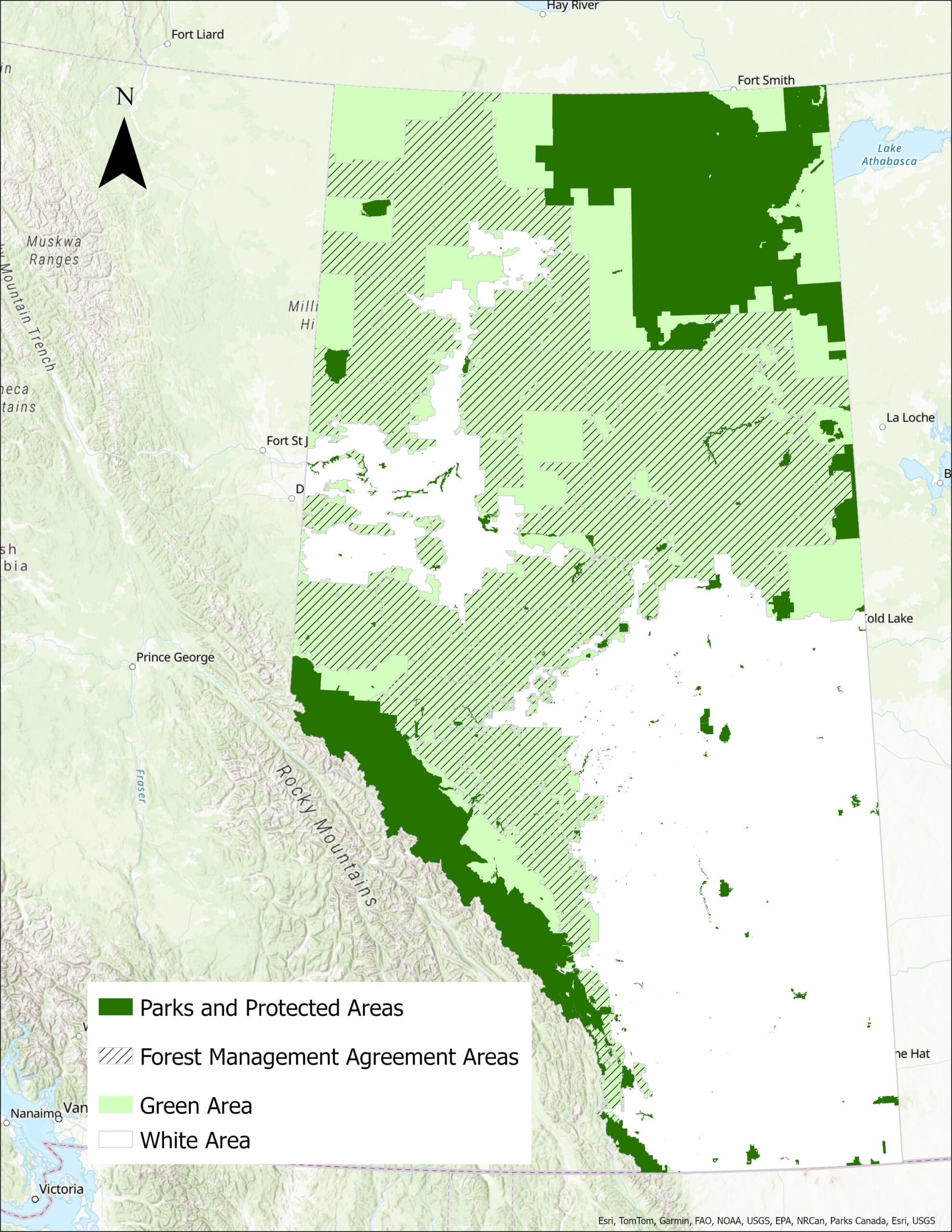
For administrative purposes, the province of Alberta is divided into two main zones: green and white. The white area is managed primarily for residential development and agriculture, and only about 25% of this area is public land. The green area makes up the majority of the land area in the province, is predominantly public or “Crown” land, and includes all the forested regions of both Northern Alberta and the eastern slopes of the Rockies. These public lands are managed by the province (or in the case of National Parks, by the federal government), for the public good.
Alberta’s Forest management system: similar to a nesting doll
The Government of Alberta (GoA) manages forested land through a tenure system, whereby forestry companies are granted harvesting rights for specific administrative units called Forest Management Units (FMUs), largely through the signing of a Forest Management Agreement (FMA). FMAs are 20-year, renewable, area-based forms of forest tenure. While other tenure types exist, such as licenses for timber volume, FMAs represent the most secure tenure type in Alberta.
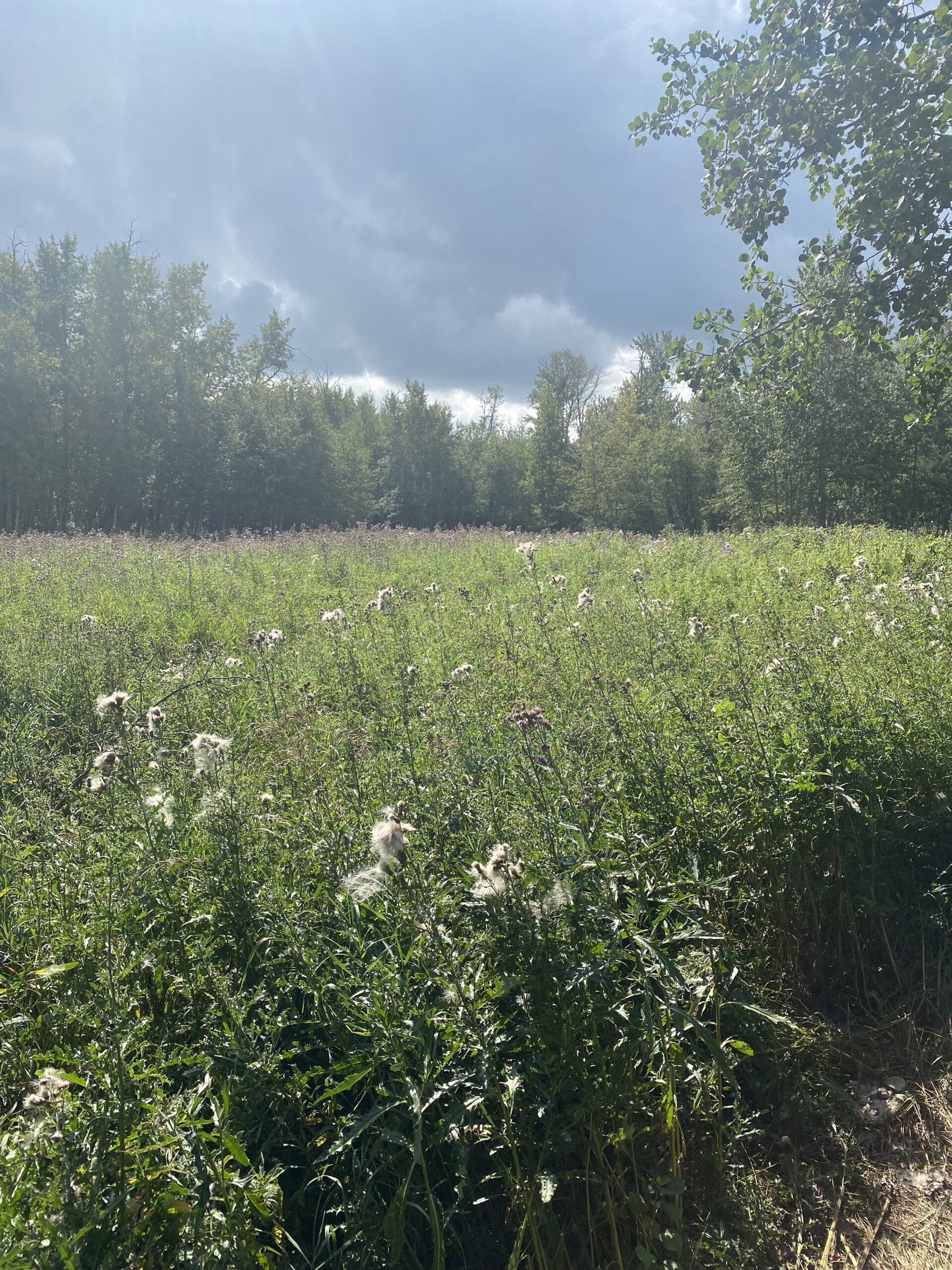
The big picture: Forest Management Plans
One company may retain rights to several FMUs, and several companies may have harvesting rights within single FMUs. All these details, as well as those around how many trees, and what species, can be harvested for a given time, are set out in Forest Management Plans (FMPs). FMPs are long-term (200 year) plans used to outline higher-level management objectives and spatial plans for a Forest Management Agreement area. They are usually updated every 10 years. While longer-term objectives are described in the FMPs, shorter-term goals, such as specific cutblocks, are covered in documents such as Annual Operating Plans and Forest Harvest Plans.
How sustainable is Alberta’s forestry industry?
The forestry industry represents a small portion of Alberta’s GDP. The forestry industry, however, is integral to the livelihoods of many Albertans and undoubtedly, the way forests are managed will impact people living in Alberta, and Canada as a whole.
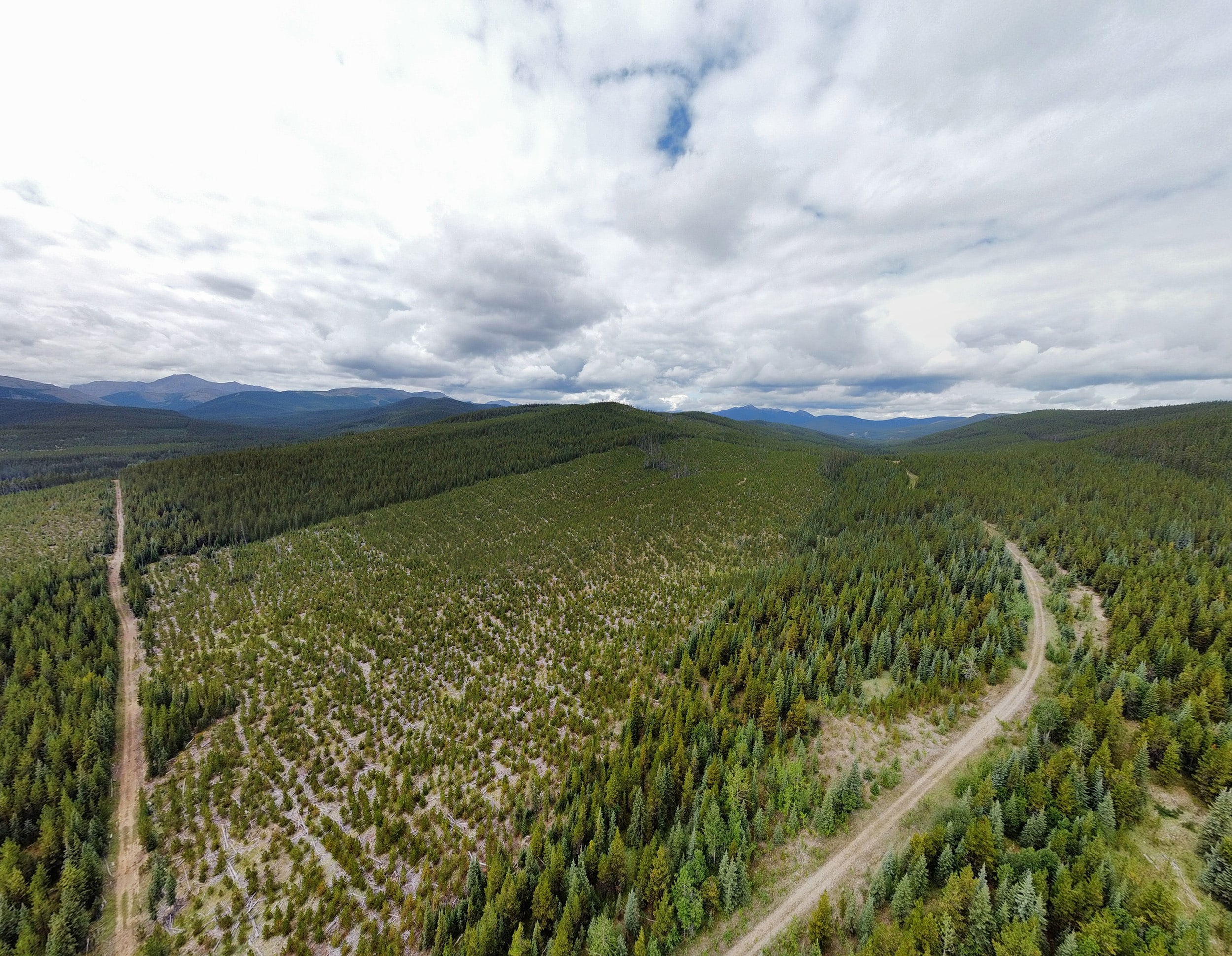
“Sustainable” Forestry certifications
Forests are complex and diverse ecosystems, and unsustainable forestry practices threaten the persistence of intact forest landscapes. Sustainable forestry practices can be dictated through legislation and regulations or encouraged through programs like certification standards, which have been adopted by most of the companies operating in Alberta, however not all programs are created equal
Two standards are used by forestry companies in Canada, the Forest Stewardship Council (FSC) certification and the Sustainable Forestry Initiative (SFI) certification. These standards are both meant to set high thresholds and comply with forest management laws and regulations, show customers they are buying products originating from sustainably managed forests, and issue certificates only after a thorough review by third-party auditors. In reality there are significant differences between the two standards.
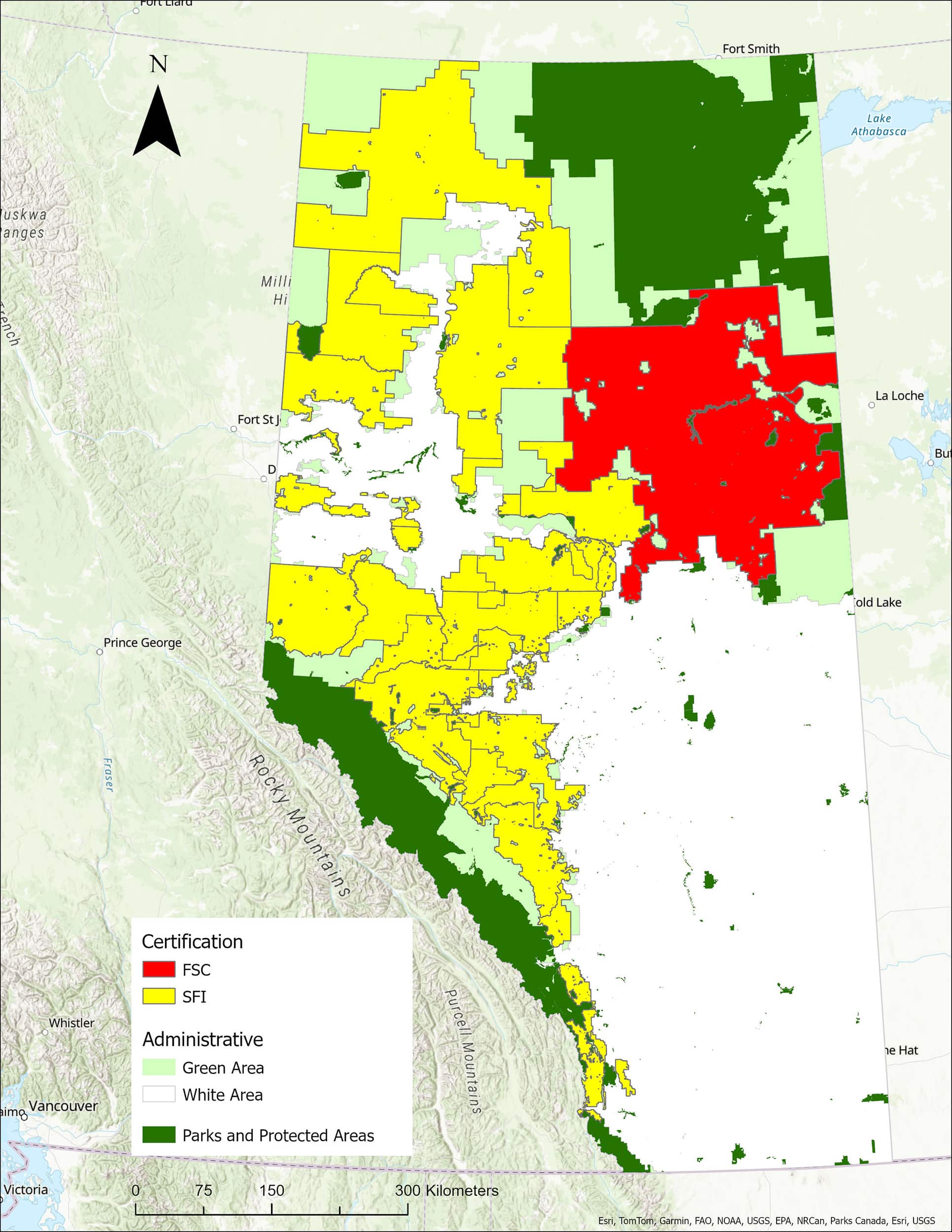
Forestry Sustainability Council (FSC) and Sustainable Forestry Initiative (SFI) Certification areas in Alberta.
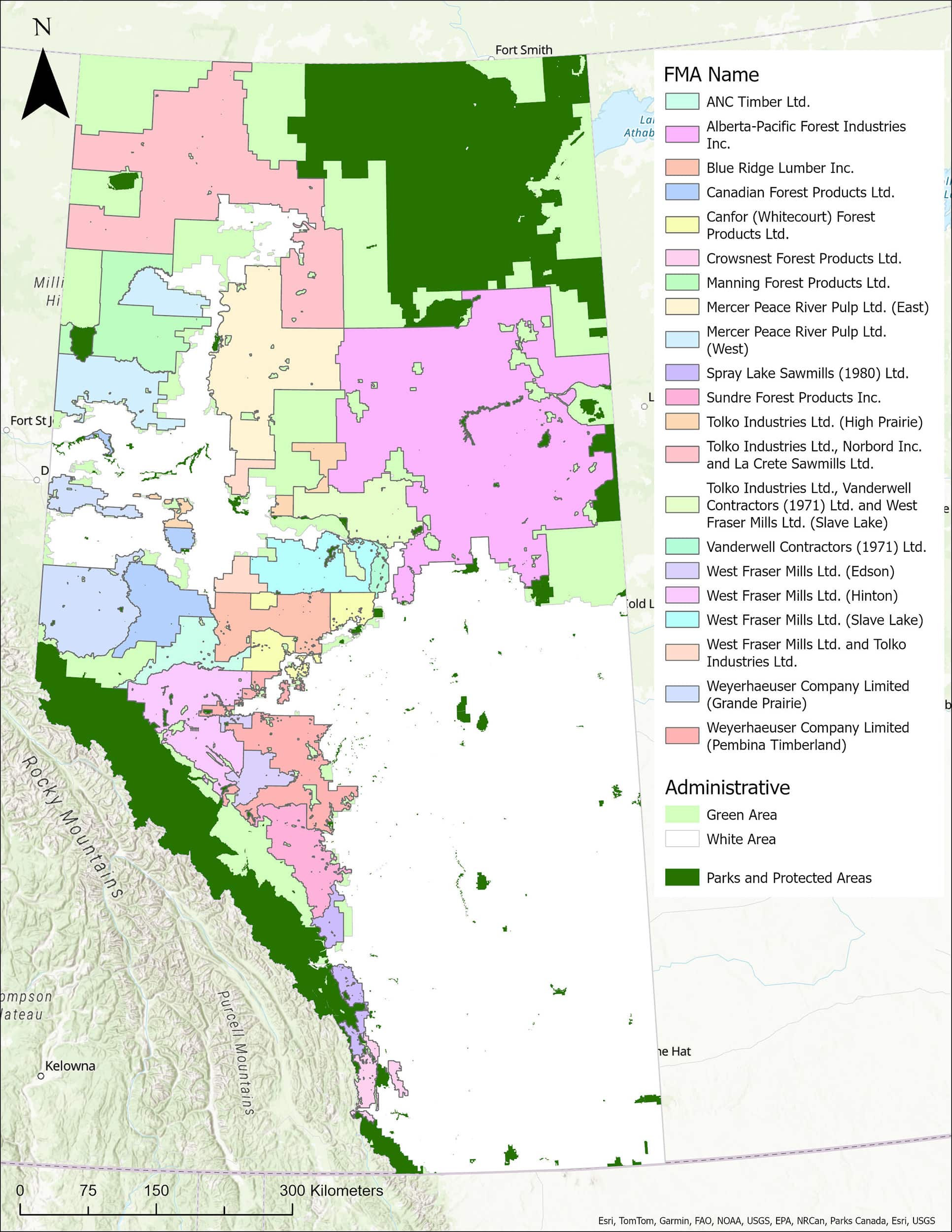
Forestry Management Areas in Alberta. Alberta-Pacific Forestry Industries Inc. is the only FSC certified FMA in the province.
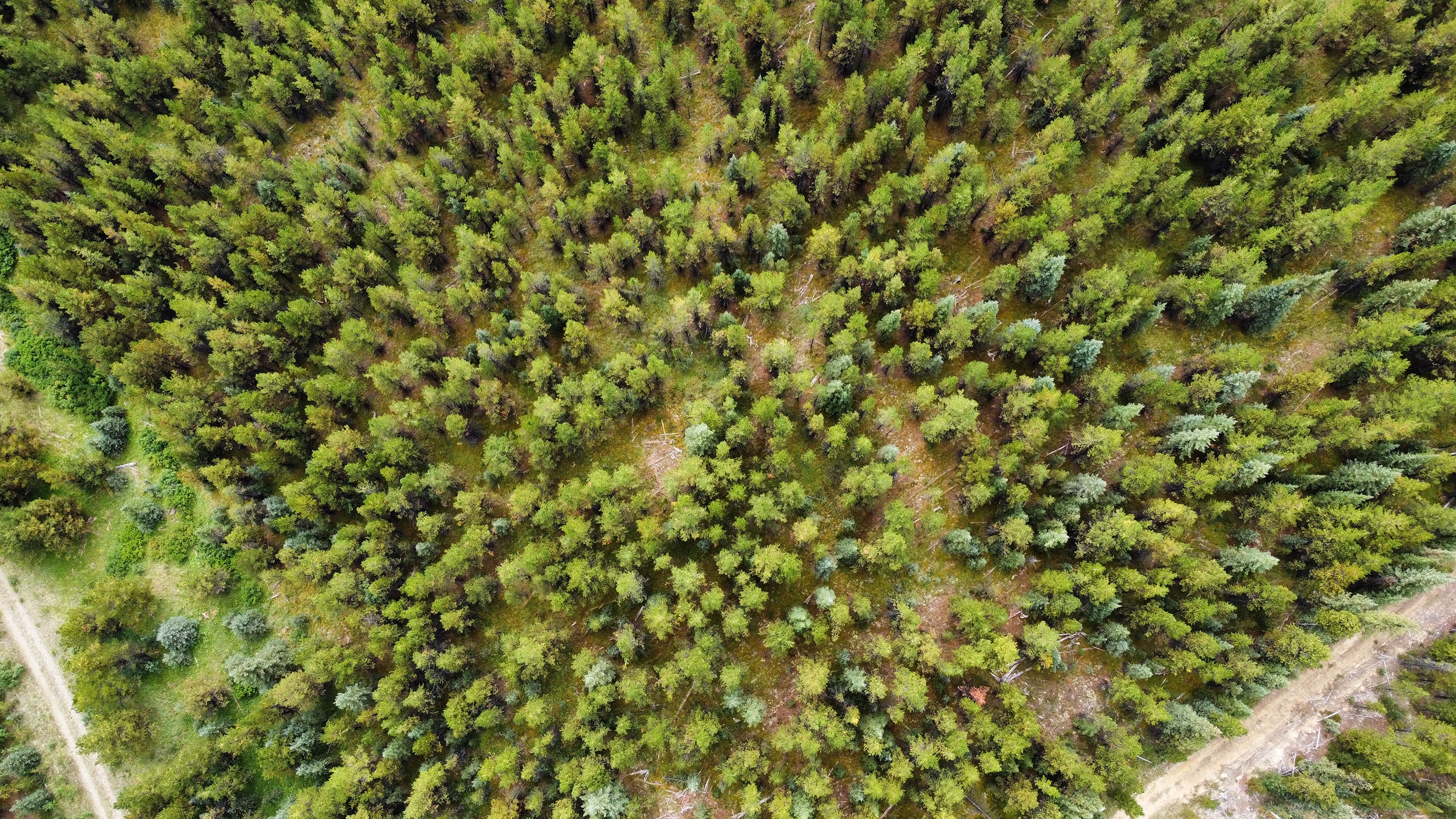
Why Sustainable Forestry Falls Short
Forestry in Canada is falling short of most people’s idea of what a sustainably managed forest should be: (variety of tree species and age classes; selective logging and representative replanting; intact, undisturbed conservation areas and corridors; rates of harvest that allow continued habitat for wildlife; healthy water and soil systems; local engagement and cultural respect; regular third-party monitoring; adaptive management...) . Across the country, ecological and social concerns around forestry are seldom fully addressed, and accounting of forestry practices is biased toward industry concerns.
Forest degradation, for example, is neither defined nor properly reported, and there is significant evidence that deforestation, forest degradation, and carbon accounting measures are flawed and significantly underrepresented. This is reminiscent of the expression, “If a tree falls in the forest and no one is there, does it make a sound?” Forests are integral to Alberta’s ecosystems and communities and the impacts of unsustainable forestry practices are loud: flooding, monocrops, degraded habitat for wildlife, biodiversity loss, and in some cases, increased risk of wildfire.
Alberta’s Forests
Forests cover approximately 60% of Alberta and are generally associated with the cooler parts of the province that receive more rainfall than the warmer, drier prairies. Alberta’s forests are predominantly in the Boreal Natural Region, although significant patches occur within the Foothills and Rocky Mountain Natural Regions to the west and southwest of the province.
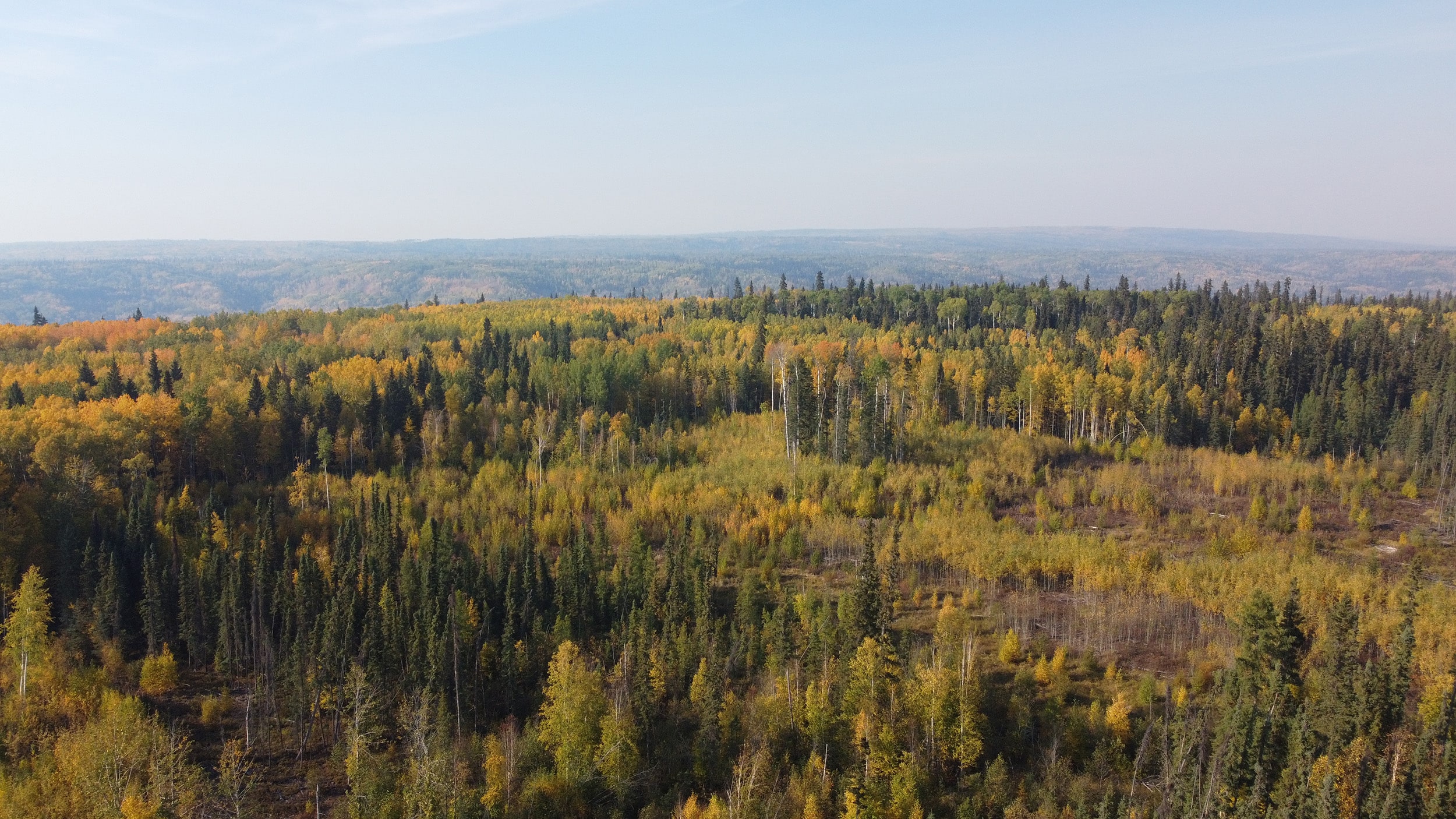
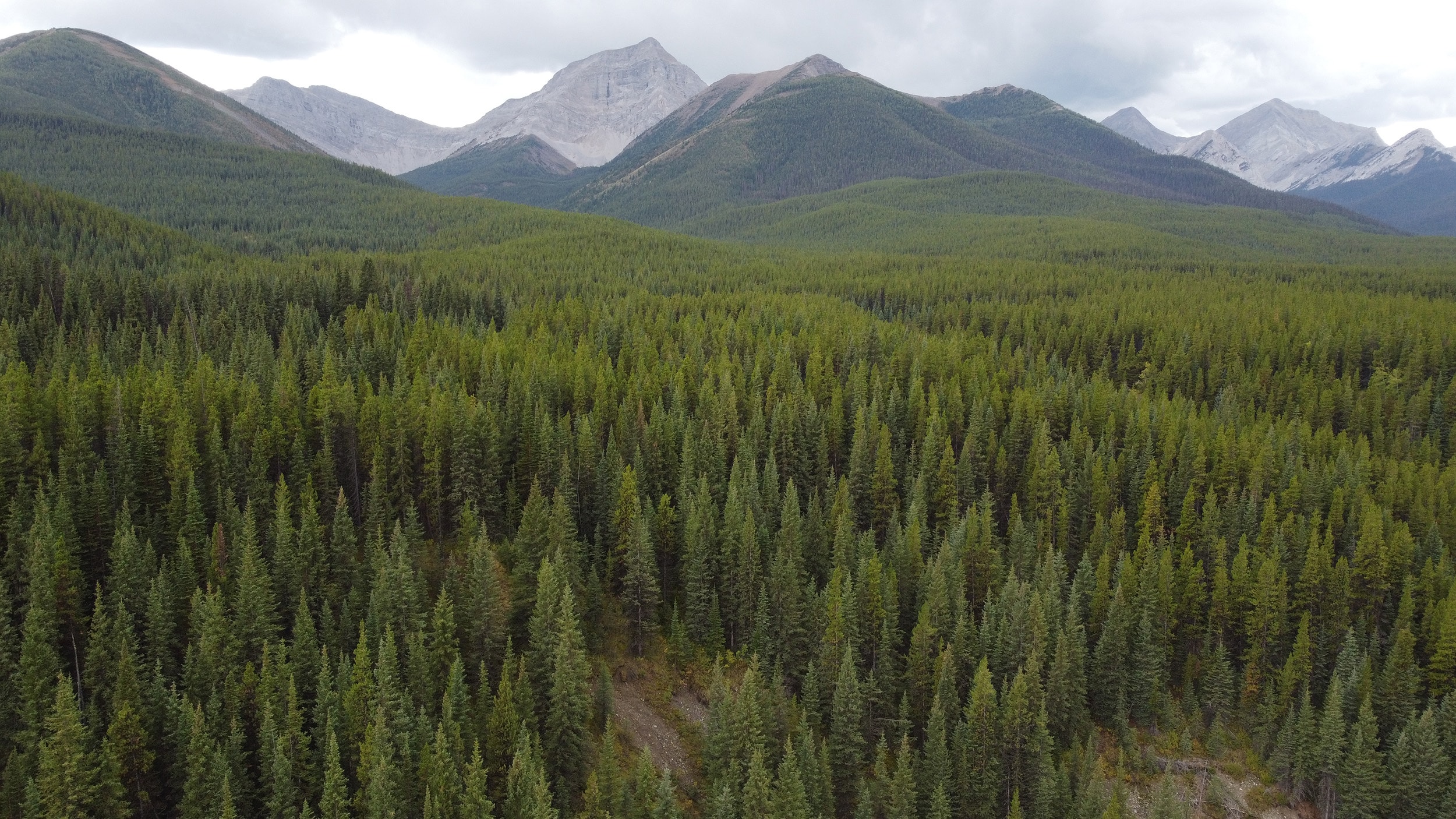
The makeup of Alberta’s forests
Alberta's forests are characterized by a mix of coniferous trees (needle-like leaves, evergreen), which dominate in the north and at higher elevations, and deciduous trees (broad-leafed, drop their leaves in fall), which are more dominant in the southern range, but are also important aspects of the boreal forest.
The presence of natural disturbances, largely wildfire, means that Alberta’s forests do not grow as old as some of the forests in temperate areas like British Columbia. Older stands in Alberta seldom survive more than 100 years before the next wildfire sweeps through. Although it is not the norm, some trees have been found to live up to 200 years.
Though this is now becoming more nuanced with the severity of wildfires seen in Alberta, naturally occurring fires can act as a regenerative force for Alberta’s forests, promoting landscape and species diversity. Some tree species in Alberta even require fire (but not TOO hot) for their seed cones to open for germination!
Forests Rich in Biodiversity
Intact forests support a huge diversity of plants, animals, fungi, and microorganisms, many of which are yet to be discovered. Forests that have not been subject to logging practices, or other significant habitat modification, have a robust canopy structure, complex understory, and a varied landscape including wetlands, fens and bogs. This all creates a multitude of ecosystems and niches which support a diverse species assemblage. Biodiverse forests are also better able to support human health and well-being, and provide essential ecosystem services including carbon storage, pollination, soil formation, water retention, and mitigation against floods and drought.




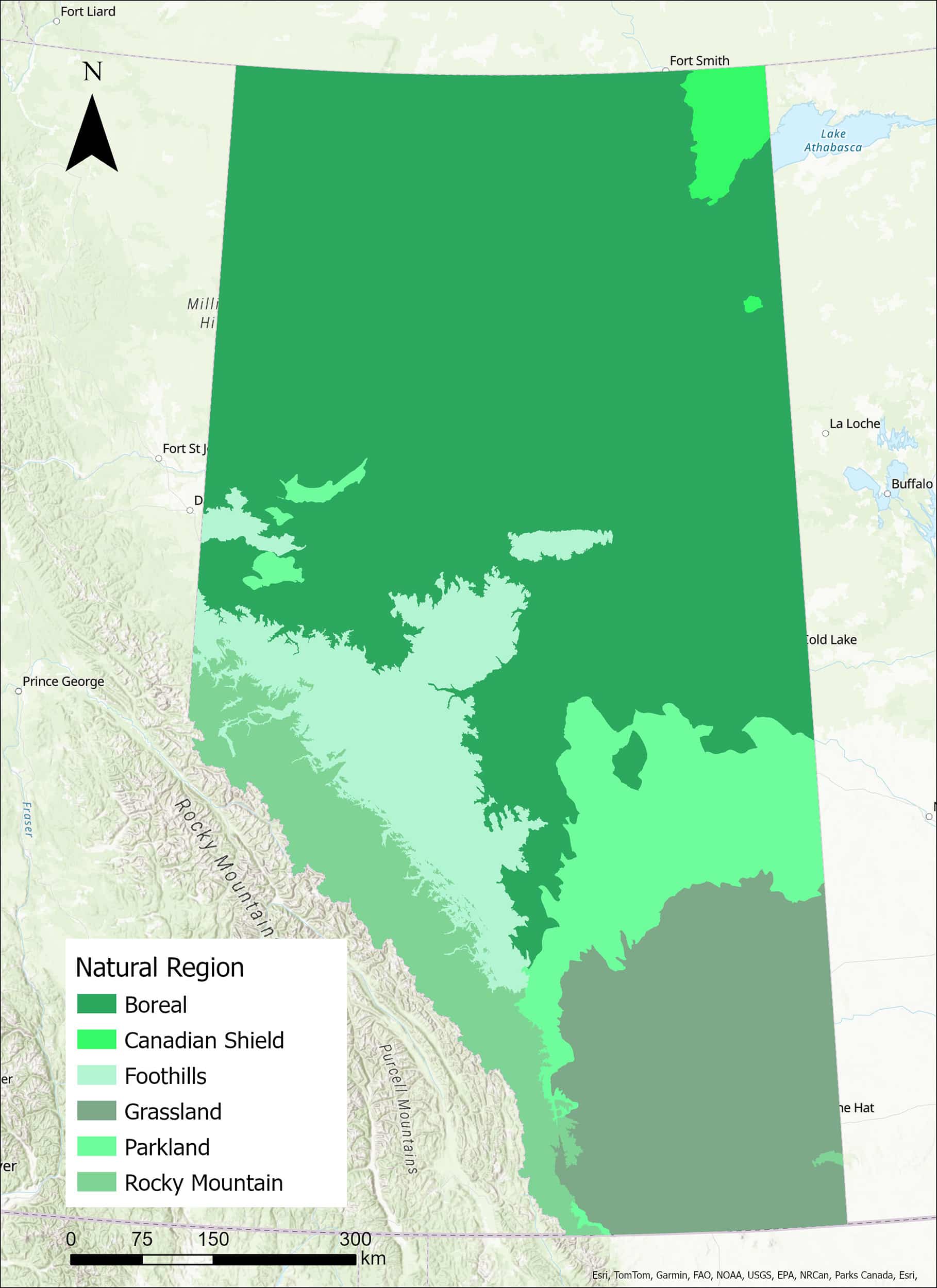
Natural subregions in Alberta. As you can see, much of Alberta is within the Boreal region.
Indigenous Forestry Practices
Though forests have only been “formally” managed in Alberta for about a century, the forests were not void of communities with their own management methods prior to industrial forestry practices. Indigenous Peoples have been shaping forested landscapes for millennia, and one example of their stewardship is cultural burns.
Fires open up landscapes, encouraging new growth of not only harvestable plants, but also fodder for game species like bison and deer. Indigenous knowledge passed on through the generations ensures that these fires are well controlled to deliver specific objectives. They are often lit under low-risk conditions in early spring or late fall and therefore burn at low intensity, moving slowly through the understory, ensuring that culturally important species that may be killed by higher intensity fires are not harmed.
This is significantly different from wildfires that generally burn a lot more quickly at higher intensity, and are more likely to burn out of control. Indigenous forest stewardship in Canada is a vital aspect of the country's approach to environmental sustainability and reconciliation with Indigenous Peoples. It represents a blend of ancient wisdom and modern practices, aimed at ensuring that forests remain healthy and vibrant for generations to come.
As awareness of the importance of Indigenous stewardship grows, there are increasing opportunities for collaboration between Indigenous communities, governments, NGOs, and the private sector. Support for capacity-building, legal recognition of Indigenous land rights, and funding for conservation initiatives are critical for advancing Indigenous forest stewardship.
Helpful Forestry Terms to Know
A Brief History of Forest Management in Alberta
People and forests in what is now known as Alberta have been inextricably linked since time immemorial, but more commercialized forest use began in the late 1800s with the establishment of the first commercial sawmills. While early forestry activities in the 19th century were localized, increased industrialization during the early to mid-20th century resulted in increased demand for timber and the expansion of logging operations across Alberta.
Clear-cut logging was prevalent during this early expansion with no formal management and little to no regard for practices that centered sustainability. A shift would only begin to take hold toward the end of this period.
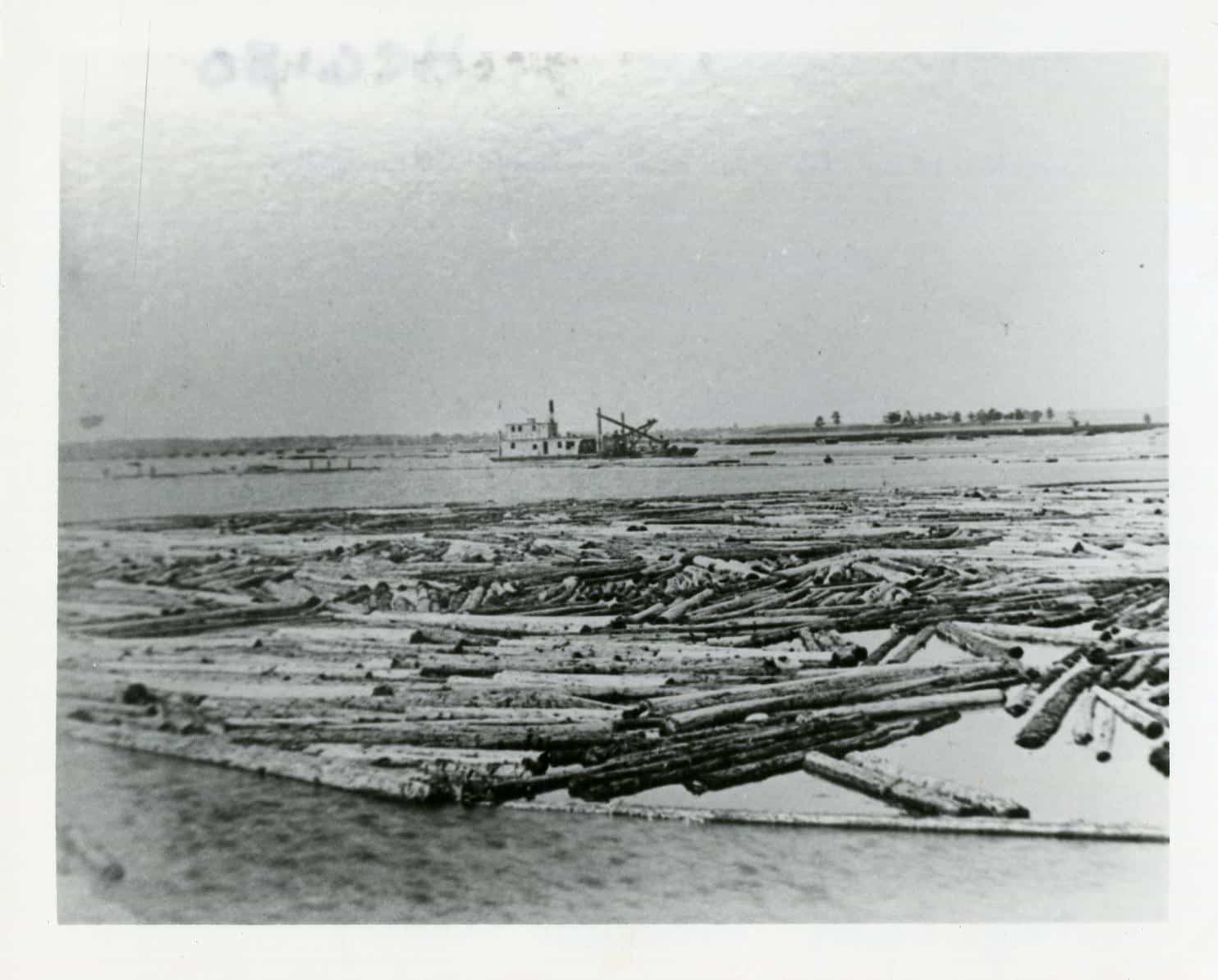


How did we get to what we know as modern-day forestry?
Alberta assumed control of its forest resources from the federal government in 1930, changing the way that public forest areas were leased, and creating the systems that have ultimately evolved into the Forest Management Areas we have today. Recognizing a need for sustainable forest management resulted in the implementation of more formal regulations and the practices such as forest inventorying, fire suppression, reforestation, and wildlife habitat management.
Increased awareness around conservation and environmental concerns within the forestry industry is a fairly new concept. Progress has been made within practices, trending towards an industry that wants forests to thrive. And yet, that does not mean an industry that prioritizes biodiversity and ecological health.
Threats to Alberta's Forests
Climate Change
The threats to Alberta’s forests posed by climate change are already being felt across the landscape with more, hotter fires, and increased prevalence of drought. Below are some of the major climate change related threats facing the forests in Alberta.
Addressing these threats requires concerted efforts to mitigate climate change through reducing greenhouse gas emissions, implementing sustainable forest management practices, protecting critical habitats, and supporting the resilience of Indigenous communities.
Wildfire
While Alberta’s forests are naturally fire prone, and many of the species that live in them are well adapted to wildfires, the increased severity and intensity of wildfires in an already heavily transformed landscape is having a negative impact on some species and ecosystems. The impacts of wildfires on Alberta’s forests need to be understood within the context of the cumulative impacts faced by forests across the landscape.
Wildfires can, for example, lead to a reduction in available habitat for some species, particularly where this habitat is limited to begin with, and has been heavily impacted by forestry and other industries. This is the case for threatened caribou, whose habitat has been severely diminished. Large wildfires that sweep through their habitat today are having a huge impact on the dwindled caribou herds in the province. They simply are left with nowhere to go.
For more insight into the impacts that wildfires have on Alberta’s wildlife and ecosystems, and what can be done to better manage this threat, see our blog.
While the forestry industry can have a large role to play in mitigating and managing wildfire threats, many of the claims that they make are not supported by the science. In this blog post, we debunk some of the myths propagated by the industry.
Unsustainable practices
Because most of the forests in Alberta are managed, unsustainable forestry practices can have a devastating impact on the forests in Alberta, and the species that live in them.
To address these impacts, it's essential to promote sustainable forestry practices that prioritize ecosystem health, biodiversity conservation, and the well-being of local communities. This includes implementing measures such as selective logging, ecosystem-based management, reforestation, and engaging with Indigenous communities to incorporate traditional knowledge and values into forest management decisions.
Insufficient legislation and regulations
The Alberta Forests Act is the primary legislation which governs forestry practices in the province. Developed in the 1970s, the foundation of the Act is embedded within a paradigm that fails to address the threats and challenges faced within forests today. Not only have values around environmental and social concerns, particularly with respect to Indigenous peoples, shifted significantly but the threats faced by forests and the forestry industry have evolved and are far better understood.
Some general concerns with Alberta’s current law and policy framework include a lack of true ecosystem-based management principles; a lack of public participation, and a lack of accountability measures. See here to read more from the Environmental Law Centre.
More specifically, the Act:
- Allows for extensive clearcutting, which can lead to habitat destruction, loss of biodiversity, and disruption of ecosystems;
- Does not sufficiently involve Indigenous peoples in decision-making processes;
- Does not adequately address the impacts of climate change on Alberta's forests, such as increased frequency and severity of wildfires, insect outbreaks, and shifts in vegetation patterns;
- Lacks robust monitoring and enforcement mechanisms to ensure compliance with regulations. Without proper oversight, unsustainable logging practices go unchecked;
- Prioritizes economic interests over environmental concerns. While forestry can be an important industry for Alberta's economy, prioritizing short-term gains over long-term sustainability harms forests in the long run;
- Does not adequately address the issue of habitat fragmentation, which results from road building, logging, and other human activities.
- Does not adequately manage for the nature-based climate solutions provided by intact forest landscapes
Key Opportunities for Healthy Forests
There are many threats to Alberta's forests and its biodiversity but there are many opportunities to improve the overall health and management of Alberta's forests.
Land Use Plans
The number one priority under Alberta’s Land Use Framework, introduced in 2008, is to develop seven regional land use plans that cover the extent of the province. In theory, these plans should be developed with all stakeholders in a region, allow for the careful balancing of conservation priorities with economic development needs, and ensure compliance by all land users.
To date, 16 years down the line, only two of these plans (the Lower Athabasca and South Saskatchewan Regional Plans) have been completed. Neither have been fully implemented. Eleven sub-regions were also established in 2019 within caribou range to advise land-use planning at the more local scale. So far, only two plans have so far been developed for these sub-regions. Draft regulations for these plans were only just released in the spring of 2024 and have not yet been finalized. This lack of progress on land use planning has detrimental effects on the biodiversity and people living in the province but, if the process is prioritised, the benefits to industry, people and the environment alike could be huge.
Intentional and careful land use planning can help:
Protected Areas
While not the only tool, well-managed and resourced protected areas have been found to be the most effective way to conserve and protect biodiversity.
Alberta has less intact boreal forest remaining than any other province in Canada. Any intact/ old growth/ primary forest that remains outside of protected areas should be protected and conserved through the creation of new protected areas and the expansion of existing ones. But even areas that are currently fragmented but serve as important habitat for threatened species such as caribou and wood bison need additional protection.
While protected areas do not prevent fire, they do provide habitat where other impacts on wildlife have been reduced. Alberta has only about 15% of its landbase protected. Globally, the consensus is that nature needs much more protected areas (30% or more) if we hope to halt and reverse biodiversity loss.
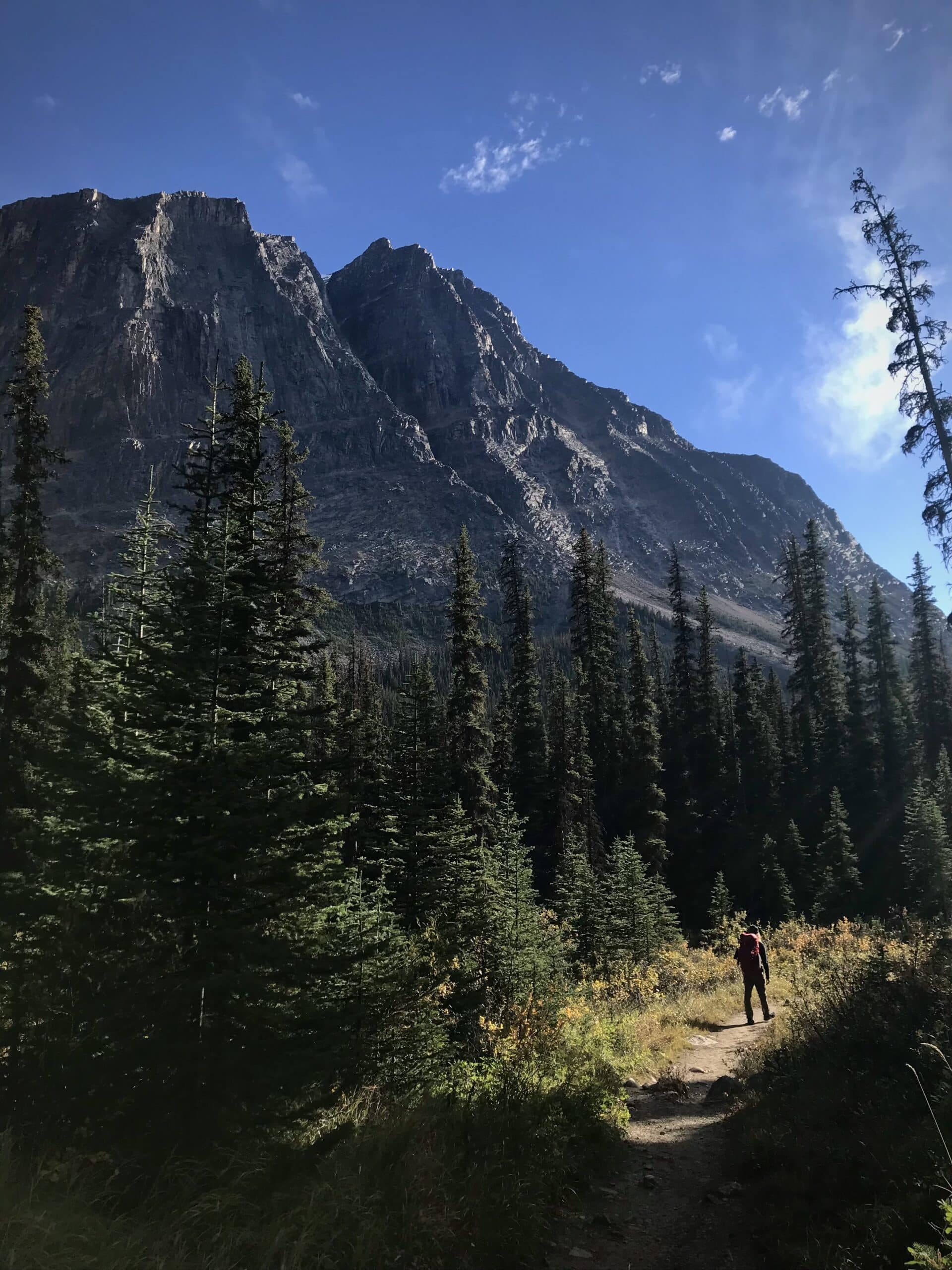

Other Effective Area-Based Conservation Measures
Other effective area-based conservation measures are areas that effectively protect and conserve biodiversity despite not being recognised as official protected areas. The level of protection required for an OECM is no less than that required for a protected area. As such, if forested areas are to be declared as OECMs they need to be protected in the long term. For protected areas, this usually means ‘in perpetuity’, or for at least the next 99 years with the expectation of an indefinite timeline. Forest blocks that are not going to be harvested for the foreseeable future cannot be recognised as OECMs if their protection cannot be more rigorously guaranteed.
Thank you
Alberta EcoTrust Foundation
We would like to thank Alberta Ecotrust Foundation’s Springboard Capacity Grant for their support for our work on Forestry Issues in Alberta.
Make a donation
Move conservation forward in Alberta.
Lasting protection for nature and wildlife in Alberta doesn’t happen overnight (although we wish it did)! Your donation fuels our fight for nature. Donate to support CPAWS Northern Alberta’s conservation efforts.
